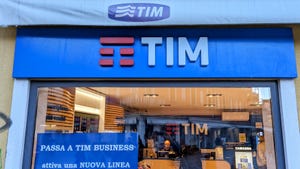Broadband InfoVision Awards: Best Broadband Access Award (Fixed line)
With just three weeks to go until the winners of this year's Broadband InfoVision Awards are announced, we preview the shortlisted entries for the category Best Broadband Access Award (Fixed).
September 27, 2012

 With just three weeks to go until the winners of this year’s Broadband InfoVision Awards are announced, we preview the shortlisted entries for the category Best Broadband Access Award (Fixed line).
With just three weeks to go until the winners of this year’s Broadband InfoVision Awards are announced, we preview the shortlisted entries for the category Best Broadband Access Award (Fixed line).
This award recognises an excellent product or innovation in the area of Fixed Access Networks by a telecom solutions vendor or a broadband operator/service provider, launched between July 2011 and June 2012 which offered significant new prospects for increased revenue, managing costs, improving quality or increasing customer satisfaction.
Alcatel-Lucent has been nominated for its VDSL2 Vectoring solution, based on an innovative vectoring processor designed in-house by Alcatel-Lucent’s Bell-Labs. The solution enables service providers to quickly and cost-effectively meet rising demands for greater broadband speed and coverage, leveraging existing copper plants with VDSL2 Vectoring and bonding technology.
Launched at last year’s Broadband World Forum, Alcatel-Lucent has notched up over 20 vectoring trials to date with service providers around the world, enabling them to achieve bandwidth targets across their subscriber base in less than half the time and with 30% of the CAPEX of deploying fibre-to-the-home. Four operators have already selected the solution for commercial deployment, with Telekom Austria being the first to hook up its customers with vectoring.
US firm ASSIA has reached the shortlisted for its DSL Expresse 2.7 network diagnostic software, designed to extend DSLAM reach, automate the repair/re-profiling of DSLs, improve the efficiency of customer care operations, and improve the operator’s ability to manage vendor relationships through network-level analysis.
DSL Expresse 2.7 also offers the option of virtually slicing the overall DSL network down to the port level via multi-tenancy management, which not only allows ISPs to share the hardware infrastructure and outside plant investments but also enables them to introduce the latest DSL technologies such as vectoring to deliver 100Mbps reliably to the home, through managing a mixed-binder environment.
Furthermore, a regulatory body can also be established as a “super user” to verify the quality of the networks within its jurisdiction and potentially enforce performance/coexistence rules through the active use of this platform.
Belgian telco Belgacom has been commended by the judges for its Explore Smart Networking product, which introduces network-based application awareness in its MPLS-based VPN portfolio, ‘Belgacom Explore’.
As enterprise networks strive to keep pace not only with business-related traffic, but also with the growth in traffic from employees surfing the web or watching online video, they struggle to distinguish between critical and low priority traffic at the application level – which is where Belgacom Explore Smart Networking comes in.
Providing what Belgacom calls “next-generation quality of service”, the product first of all shows a customer what’s happening on their WAN network in user-friendly language, offers a control feature to allow the best performance for traffic that is important to the business, and (in a third, later phase) will offer enterprise Service Level Agreements (SLA) on an application level, thus guaranteeing the performance of application across the WAN, and eliminating the need of SLA for each individual network component.
Swedish firm Ericsson has been nominated for its Ribbonet Microducts Indoor Duct 3mm, a high performance system including air blown fibre in extra slim 3mm microducts for FTTH installations in Multi Dwelling Units.
The slim design combines the benefits of low-cost splice free installation of air-blown fibre with slim size, suitable for installation in narrow risers, and enables installation in virtually any existing risers in Multi Dwelling Units. The use of existing infrastructure saves time and costly core drilling is avoided. The smaller weight and size also enables saving in the area of handling, storing and shipping.
The 3mm system has been verified in field trial installation in the city of Hudiksvall, Sweden and the results show substantial cost savings of approximately 23%, according to Ericsson. Pilot installations have also been performed in Gothenburg, Sweden and Geneva, Switzerland with extremely good results and positive feedback from customers.
Huawei‘s Largest capacity Vectoring System is designed to address crosstalk issues between copper lines on VDSL2 networks which impair performance, using various methods such as crosstalk detection, compensation and cancellation to achieve the best DSL performance possible.
Huawei’s MA5603T system features include: large capacity, capable of supporting 288 ports vectoring, scalable to 384 ports; a built-in independent bus; easy deployment and maintenance; highly scalable, reserving enough bus bandwidth to support vectoring upgrading; short activation times for vectoring terminals (less than 60 seconds); high compatibility; and high stability.
The vectoring system has been tested successfully in a dozen European mainstream operators such as BT, Deutsche Telekom and Swisscom. Considering a typical European broadband service operator with 1mn user ports as a case, the yearly revenue increase for a typical network is calculated to be around €24m.
French firm Sagemcom Broadband has been nominated for the Sagemcom F@ST 3965 Home Gateway, built around a native IPv6 core, which combines wire-speed access (supporting ADSL as well as all VDSL profiles), true Gigabit Ethernet to Gigabit Ethernet routing for fibre deployments, and two high-performance wireless interfaces – a 2.4GHz and also a 5GHz video-grade wireless interface for IPTV transport over the air.
The unit includes DLNA server capabilities (see above), and Sagemcom’s latest HG6 middleware to manage back-up or synchronisation of local media files with cloud based-content, enabling content on the hard disk to be automatically duplicated in the cloud.
The Sagemcom F@ST 3965 also supports unified voice services on all voice interfaces: local FXS, integrated DECT CAT-iQ interfaces and associated handsets, SIP phones of softphones available on LAN. A SIP proxy is implemented to offer those voice services across all interfaces, targeting mainly business applications.
Finally, Chinese firm ZTE has been lauded by the judges for its ZXDSL 9836 vectoring engine, created to improve the performance of VDSL2 lines by reducing crosstalk and interference not just on a board level, but on a system level, ensuring that all users connected to various line cards in a DSLAM benefit from interference cancellation.
This system-level vectoring engine delivers significant bandwidth gains of as much as 80 per cent for downstream traffic and a huge 340 per cent for upstream traffic, for users located within 300m of a DSLAM. It can also increase the distance over which operators can provide superfast broadband speeds via copper lines, up to as far as 400m from a DSLAm in certain scenarios.
For more information on this year Broadband InfoVision Awards and to register, please visit http://www.broadbandworldforum.com/awards/about-the-awards/
About the Author
You May Also Like










.png?width=300&auto=webp&quality=80&disable=upscale)


_1.jpg?width=300&auto=webp&quality=80&disable=upscale)